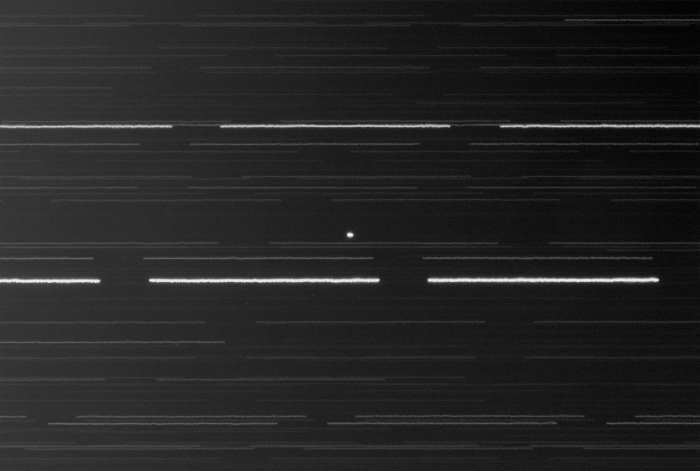
Roughly 500 geostationary satellites are currently placed in a static orbit (as viewed by a ground-based observer) about our planet at an
altitude ranging from 500 to 40,000 kilometers. The closest satellites orbitting the planet are believed to be spy satellites whereas most
distant are the geostationary group of satellites with an instrinsic magnitude of 11 or greater. As a result, due to their distance and faint
magnitude, geosats may be classified as the DSO's of the satellite world. At their high altitude not only can they virtually view the complete
globe below them but they also have the unique characteristic of having their orbital speed closely match the rotational speed of the earth
and, as such, give the impression to a ground-based observer of being stationary above the planet. These satellites have a wide range of
applications and functions and include remote sensing (Meteosat, GOES-East and GOES-West, GMS etc) and such telecommunication functions as
direct broadcast voice and video communications as well as live television coverage (Astra, Hot Bird, Telstar etc) by virtue of the fact they
can beam their signal from a "fixed" point in space relative to a ground source.
Note: The satellite constellation at 13.0° East is one of the most well-known fleets comprised of Hotbird 13A (aka
HB 6), Hotbird 13B (aka HB 8) and Hotbird 13C (aka HB 9). The fleet has a broad footprint covering Europe, Northern Africa and the Middle East
with services centered on both digital and high-definition television (1100 channels to 120 million homes) as well as radio and multimedia
services. One of the initial satellites parked at 13.0° East was Hotbird 5 (aka Eurobird 2) following its launch on October 9, 1998 from Cape
Canaveral, Florida using an Altas 2A rocket. The satellite weighs 1.310 tons and featured 22 Ku-band transponders.
Despite its age, Hotbird 5 was later moved to 25.5° East (in 2002) and renamed Eurobird 2 so as to reflect its broadcast footprint centered on
the eastern Mediterranean area delivering television and broadband services. The satellite is now known as Arabsat 2D (and/or BADR 2) owing to
the fact six of its transponders are leased to Arab broadcasting interests.
Note: The first image below represents a single one-minute exposure whereas the second image below is the sum of
the fifteen one-minute exposures captured and which reveals some very slight motion for the four Astra satellites during the approximate 20-minute
span and which quite often is characteristic of geosats (ex. due to inclination).
|
NORAD ID: 25495 Common Name(s): Hotbird 5, Eurobird 2, Arabsat 2D, BADR 2 Int Code: 1998-057A Location: 25.5° East Perigee: 35,774.1 km Apogee: 35,813.2 km Inclination: 0.0° Period: 1,436.0 min Launch Dates: Oct 09, 1998 Origin: EUTELSAT (Int) |
 
|
Date: Nov 03, 2012 00:30 - 00:48 UT+2 Location: Athens, Greece Equipment: AP 305/f3.8 Riccardi-Honders AP 1200GTO GEM SBIG ST-10XME SBIG CFW10 SBIG LRGB filters Integrations:
Image Scale: 1.21" per pixel Temperatures:
Software: CCDSoft V5.00.201 CCDStack V1.6.0.5 Photoshop CS5 |